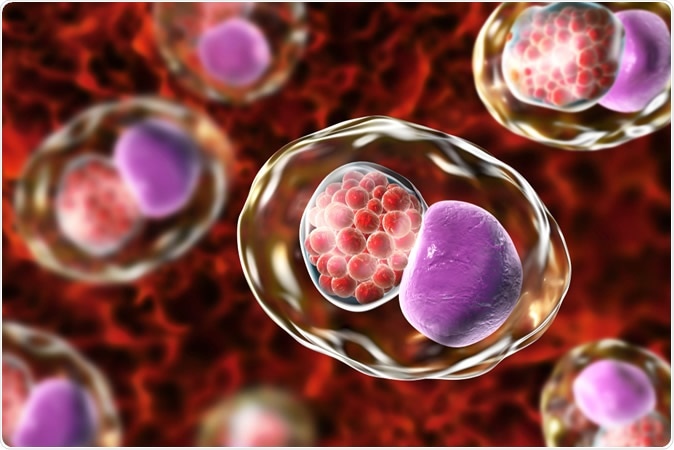A vaccine against the sexually transmitted infection (STI) chlamydia is now a substantial step closer to reality after successfully passing its Phase 1 clinical trial.
A team of British and Danish researchers conducted a test of the vaccine they developed for Chlamydia trachomatis, or chlamydia, which caused at least 127 million new infections in 2016 alone, the World Health Organization (WHO) reports. In the United States, the Centers for Disease Control and Prevention (CDC) reports that the STI caused nearly 3 million new infections in 2017.
Chlamydia is commonly treated with antibiotics. However, the infection may cause no symptoms, and many individuals are unaware they have it. If it’s left untreated, it can lead to a multitude of complications for both men and women, including a higher risk of contracting human immunodeficiency virus (HIV) and fertility issues.
Chlamydia vaccine shows promise
The clinical trial included 35 women from ages 19 years old to 35 years old. The researchers performed the study at London’s Hammersmith Hospital. In the study published in The Lancet Infectious Diseases, the researchers tested the vaccine they developed to protect against chlamydia.
All the participants received three injections in their arm for over four months, followed by two more doses given via a nasal spray in the weeks after. The researchers tested two formulations of a vaccine; each formulation was given to 15 women. Another five received a placebo.
A genetically engineered version of a protein
The two vaccine candidates are based on the genetically engineered version of a protein found on the surface of the bacteria. The ingredients in the vaccine are used to boost an individual’s immune response to the vaccine, dubbed as adjuvants.
During the study, the vaccine successfully provoked an immune response, leading to elevated levels of antibodies against the bacteria causing chlamydia in the vaginal fluids and the blood.
“The vaccine showed the exact immune response we had hoped for and which we have seen in our animal tests. The most important result is that we have seen protective antibodies against Chlamydia in the genital tracts,” Frank Follmann, the Head of the Department at the Statens Serum Institut (SSI) in Denmark and study author, said in a statement.
“Our initial trials show them preventing the Chlamydia bacteria from penetrating the cells of the body. This means that we have come a lot closer to a vaccine against Chlamydia,” he added.
By the end of the trial, a total of 32 women had taken all five doses. The women showed no adverse effects, and both formulations appeared to be safe. However, the researchers said that one of the formulations stood out as a front runner, making it the vaccine that will move to the second phase of the clinical trial.
Phase II Trial ahead
Given the success of the chlamydia vaccine in the first phase of the clinical trial, which was designed to check the safety and the ability to activate the immune system. Two formulations were used, but one stood out, producing nearly six times more antibodies than the other. Hence, it was chosen to move on to the second round of testing.
The findings are encouraging as they show the vaccine is safe and produces the type of immune response that could potentially protect against chlamydia,” Robin Shattock of Imperial College and co-author of the study said.
“The next step is to take the vaccine forward to further trials, but until that’s done, we won’t know whether it is truly protective or not,” he added.
If the vaccine aced the second phase of the trial, the scientists would prepare the final round of tests, and in time, there might get a chlamydia vaccine available to protect people from the infectious disease.
"Although many more years of research are needed before this vaccine is marketed, we are planning the next stage of research," Helene Juel, a scientist at the Statens Serum Institut in Denmark, said.
Chlamydia infection signs and symptoms
Chlamydia is one of the most common STIs in the United States. It is easily spread since there are no symptoms and the person might not be aware that he or she is infected. About 75 percent of infections in women and 50 percent in men are asymptomatic.

Chlamydia trachomatis bacteria, 3D illustration showing reticulate bodies of Chlamydia forming intracellular intracytoplasmic inclusions (small red) near the cell nucleus (purple) - Illustration Credit: Kateryna Kon / Shutterstock
But, in some cases, patients may experience certain signs and symptoms. In women, they may experience abdominal pain with fever, abnormal vaginal discharge with an odor, painful periods, bleeding between periods, itching or burning sensation around the vagina, pain when urinating, and pain during sexual intercourse.
In men, the signs and symptoms include painful urination, small amounts of clear or cloudy discharge, itching or burning sensation at the penis opening, and testicular inflammation.
Journal reference:
Safety and immunogenicity of the chlamydia vaccine candidate CTH522 adjuvanted with CAF01 liposomes or aluminium hydroxide: a first-in-human, randomised, double-blind, placebo-controlled, phase 1 trial, Abraham, Sonya et al., The Lancet Infectious Diseases, https://www.thelancet.com/journals/laninf/article/PIIS1473-3099(19)30279-8/